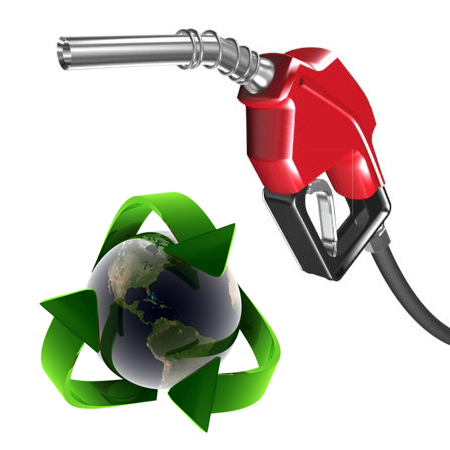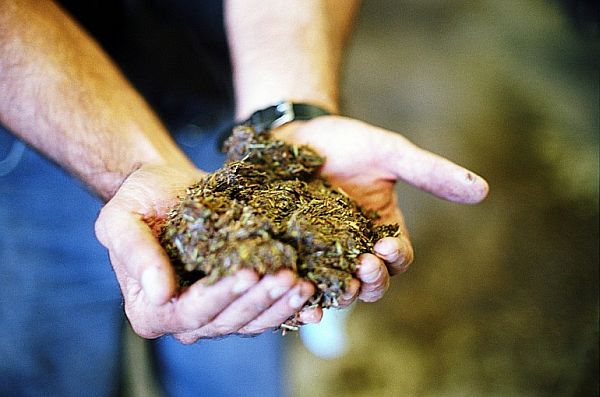Deep beneath the earth’s crust, there existed a vast ocean of black gold, the fuel that revolutionized the way machines worked and the way people traveled. Since the discovery of vast oil reserves, people had begun exploiting these wells without even thinking that it cannot be replenished. Man had become so dependent on this fuel that he began wondering what will happen when the last drop of it is used up. This is when the scramble began to find out alternative fuels and one of the results was Bio-diesel.

Bio-diesel is nothing but trans-esterified lipids, or in layman terms, vegetable oil or animal fat based diesel fuel. It is generally prepared chemically by reacting oil with an alcohol. This fuel can be used as it is in diesel engines or can be modified by blending it with existing fuels to create a better and a cleaner fuel. This article is a brief description about Bio-diesel, its advantages as an alternative fuel and the positive effect it has on the environment.
Bio-diesel can be basically made from almost any plant derived oil or animal fat. It can also be made from soyabean or any other vegetable oil. The chemical separation of glycerin from these vegetable oils produces methyl esters or bio-diesel. Even though, bio-diesel can be used in its purest form, blending it with regular fuels is its most common usage in the current market. In its purest form, referred to as B100, the current diesel engines require a slight modification. But blends of 20 percent of bio-diesel with petroleum diesel can be used in existing diesel engines with no modifications.
The applications of bio-diesel are many. Apart from using them in on road diesel vehicles, trains and air crafts have also started using blends of bio-diesel. This includes the worldâs first commercial news making flight of United Airlines, which used 40 percent bio-diesel blended with 60 percent conventional jet fuel. The famous park trains of Disneyland run on bio-diesel manufactured from cooking oils used by them. Many of the domestic and commercial boilers also use a mix of bio-diesel with heating oil as heating fuel. This is often referred to as bio-heat.
One of the major problems with Bio-diesel is its hygroscopic property at the molecular level. Even though it does not completely mix with water, like ethyl alcohol, it absorbs very little quantity of water at the molecular level. Now this poses a serious problem when used as fuel, it reduces the heat of combustion, leading to more smoke and less power. It also corrodes the fuel system components in the longer run. There is also a problem of microbe growth due to the presence of moisture in the fuel, which could lead to clogs in the filters of the fuel system. Despite these facts, with the Super-critical Methanol Production methodology, this problem can be eliminated. In this method, the chemical process of creating bio-diesel is carried out under high temperature and pressure, which eliminates contamination of fuel with water.
The argument over the energy balance of production of bio-diesel is still on. A transition to the automobile industry completely running on bio-diesel would mean the production of vegetable oils should be done on a larger scale. But most of the third world countries would not be able to use their lands for this purpose, as their crop production would take a hit. For well developed nations, the consumption of fuels is so high that it would be almost impossible to generate such quantities of fuel as it would mean large areas of land for crops. But the adoption of bio-diesel as an alternative fuel would mean that their dependence on conventional fuel would be less.
Considering the problems for the production of vegetable oils that are used for manufacturing bio-diesel, research is on into finding more suitable crops and improving oil yield. To replace the current fuel consumption of conventional fuels it would take substantial areas of land and immeasurable quantities of water. Some algae and fungi have natural oil content above fifty percent and these can be grown in ponds. Oil can then be extracted from them and used in the creation of bio-diesel. Though it is not yet commercially produced, this seems to be a viable option as for the production of algae and single-celled fungi, no huge areas of land is required. Extracting oils from coffee grounds and alligator fats is also being carried out for the production of bio-diesel.
Even though the use of bio-diesel may trigger a slight decrease in the fuel economy, the main advantage of it is that it is bio-degradable. This also reduces the quantity of carbon monoxide and carbon dioxide content when burnt and in turn reduces the chance of acid rains. Being sold at a lower price than that of regular diesel, it also extends the life of a diesel engine. Bio-diesel is a fast growing alternative fuel around the world. It is widely used in most of the European countries, especially France. It biodegrades quickly and is very less toxic. It is also considered safer than regular diesel as it has a higher flash point.
Apart from the cost issue of large scale production of bio-diesel, there are very less reasons that can be stated on why bio-diesel shouldn’t be used. With the depleting resources of fossil fuels, mankind would have to find an efficient alternative fuel and the environment friendly bio-diesel is a sure answer to this. Slowly and steadily the revolution of bio-diesel is catching on and teams of highly professional researchers and scientists are on the job to find better ways of manufacturing this bio-fuel which would run the tomorrowâs world. It is rightly stated that bio-diesel is the real fuel. It is a real form of alternate energy that would definitely be used by millions in the days to come.




